When people first see the vibrantly colored flowers of red bird-of-paradise, they literally stop in their tracks to stare at them. Orange-red flowers in varying shades appear on this shrub in spring through summer. Red bird-of-paradise loves warm temperatures and lots of sun, making it perfect if you live in the U.S. South or Southwest.
Browse more flowers by color
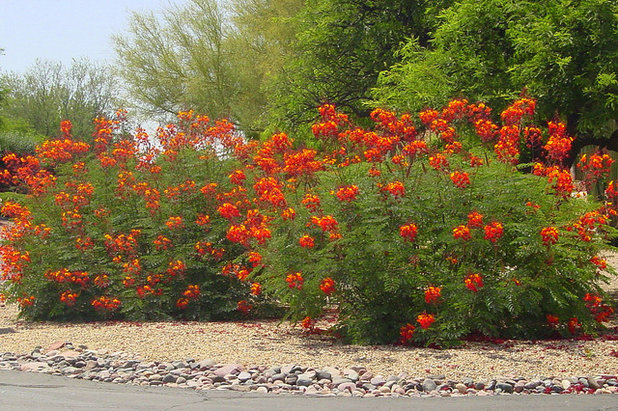
Noelle Johnson Landscape Consulting
Botanical name: Caesalpinia pulcherrimaCommon names: Red bird-of-paradise, dwarf poinciana, peacock flower, pride-of-Barbados
Origin: Native to the West Indies and Mexico
Where it will grow: Hardy to 10 degrees Fahrenheit (USDA zones 8 to 11); find your zone
Water requirement: Medium
Light requirement: Full sun
Mature size: 6 to 10 feet tall and wide
Benefits and tolerances: Drought tolerant once established, but it does best if watered once a week in spring through fall; attracts butterflies and hummingbirds
Seasonal interest: Bright orange-red flowers appear in April through September.
When to plant: Spring, summer or fall
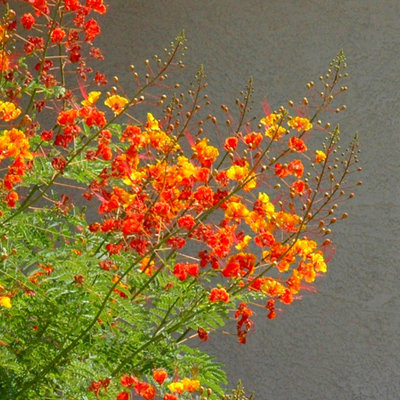
Noelle Johnson Landscape Consulting
Distinguishing traits. The crowning glory of red bird-of-paradise is its beautiful flowers that are held aloft above the large shrub.
Varying shades of red, orange and yellow appear on each flower, making these shrubs highly desirable in the landscape. Seedpods will follow once the flowers fade. The flowers are a huge favorite of hummingbirds.
In tropical areas, such as Central America, red bird-of-paradise can become invasive.
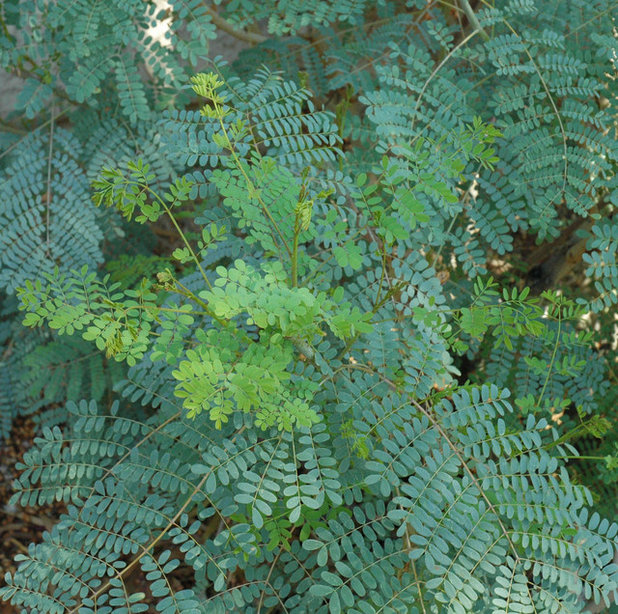
Noelle Johnson Landscape Consulting
The foliage consists of tiny leaflets that lend a tropical look to a desert landscape. Dormant in winter, red bird-of-paradise will die back to the ground, but it will grow back quickly in spring.
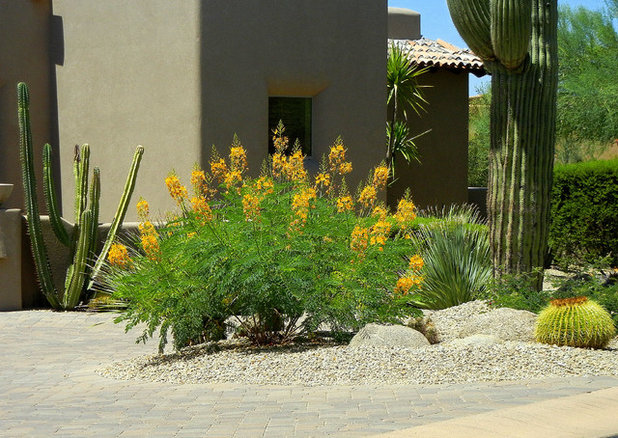
Noelle Johnson Landscape Consulting
A variety called 'Phoenix Bird' has lovely yellow flowers.
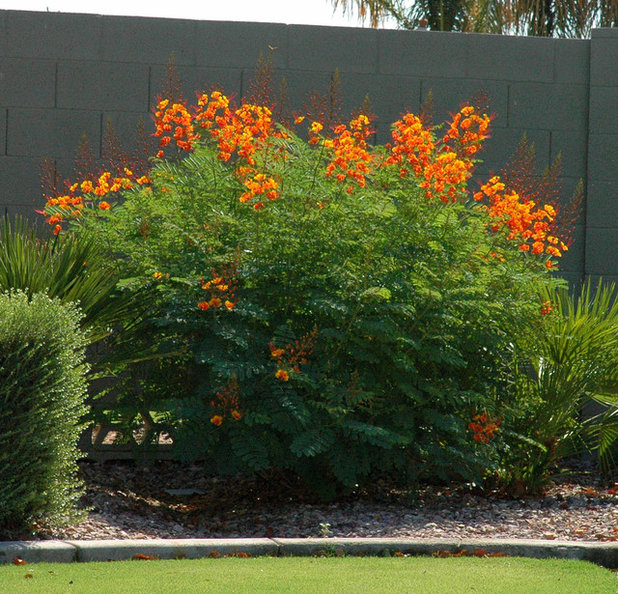
Noelle Johnson Landscape Consulting
How to use it. This large shrub looks great planted in groups of three or five. Red bird-of-paradise along a bare wall will add beauty to a formerly bare expanse. It is suitable to plant around swimming pools and can also be used as an informal hedge or to screen your pool equipment or air conditioning unit from view.
While many shrubs cannot handle areas with hot, reflected sun, red bird-of-paradise will thrive in these inhospitable spots. For maximum color impact, add
purple trailing lantana (
Lantana montevidensis, zones 8 to 10) in front along with groups of angelita daisy (
Tetraneuris acaulis, zones 5 to 9) for great color contrast throughout the warm months.
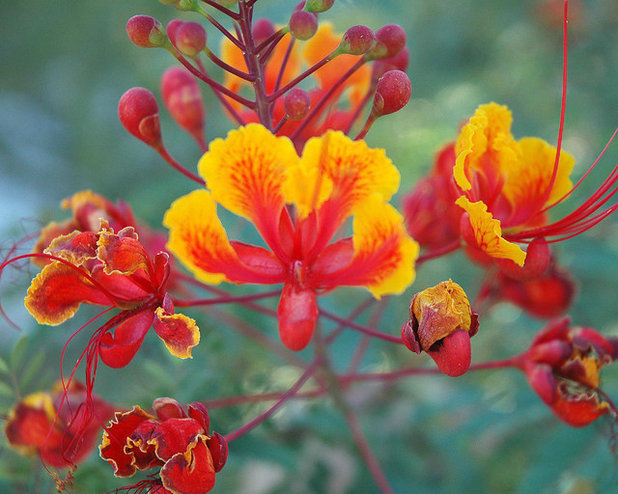
Noelle Johnson Landscape Consulting
Planting and care. Red bird-of-paradise isn't fussy. Plant it in an area with full sun in well-drained soil. Maintenance is simple: Prune back severely in winter to 1 foot high. Once spring arrives it will grow back quickly, and it will begin blooming in April or May. In colder areas (zone 8), mulch the base of the shrub in winter to protect the roots.
To extend the flowering period, lightly prune by removing the top 2 feet in August, which will stimulate new blooms through October.
Next: More shrubs with beautiful flowers and foliage





